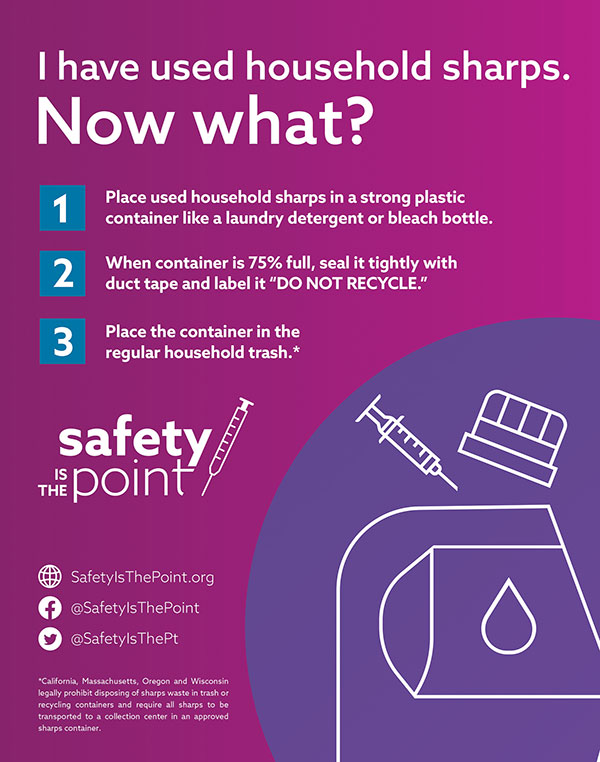(Family Features) It doesn’t matter if you are traveling by plane, train, car or staying home this holiday season, it’s important to know how to safely dispose of used medical sharps. Millions of people in the United States use needles, lancets and syringes – otherwise known as sharps – to puncture the skin and dispense medication to help manage short- or long-term chronic conditions like diabetes, arthritis, cancer or auto-immune diseases.
For both existing sharps users and people using sharps for the first time, disposal can be confusing, especially while traveling.
An easy-to-use online tool can help sharps users navigate safe disposal rules wherever they are. An option like SafetyIsThePoint.org helps people learn how to safely discard their used sharps and find disposal locations across the United States.

People who use sharps can often dispose of them at home or on the road. It’s as simple as 1-2-3:
- Place used sharps in a strong, plastic container like a laundry detergent or bleach bottle.
- When the container is 75% full, seal it tightly with duct tape and label it “do not recycle.”
- Place the sealed container in regular household trash.
Disposal rules are different in every state, so it’s important to confirm local disposal regulations. To help travelers comply with local regulations, SafetyIsThePoint.org includes a clickable map and ZIP code finder that explains disposal rules by location, as some states legally prohibit disposing of sharps in the trash or recycling containers and require sharps to be transported to a collection center in an approved sharps container.
Free printable resources and a step-by-step guide for at-home sharps disposal are available on the website for sharps users, health care providers, patient educators and advocates. The resources can also be downloaded and sent to family members and friends ahead of travel, so they know what to expect.
Learn more about the rules of safe sharps disposal this holiday season at SafetyIsThePoint.org.
Commonly Used Medical Sharps
- Needles – fine, slender, hollow pieces of metal, typically attached to syringes, used to inject medication under the skin or withdraw fluid from the body
- Lancets, also called “fingersticks” – often used by people with diabetes to get drops of blood for testing
- Auto injectors, including epinephrine pens – syringes pre-filled with fluid medication designed to be self-injected into the body
- Infusion sets – tubing systems with needles used to deliver drugs to the body
- Connection needles – needles that connect to a tube used to transfer fluids in and out of the body
Photo courtesy of Getty Images
Source:







